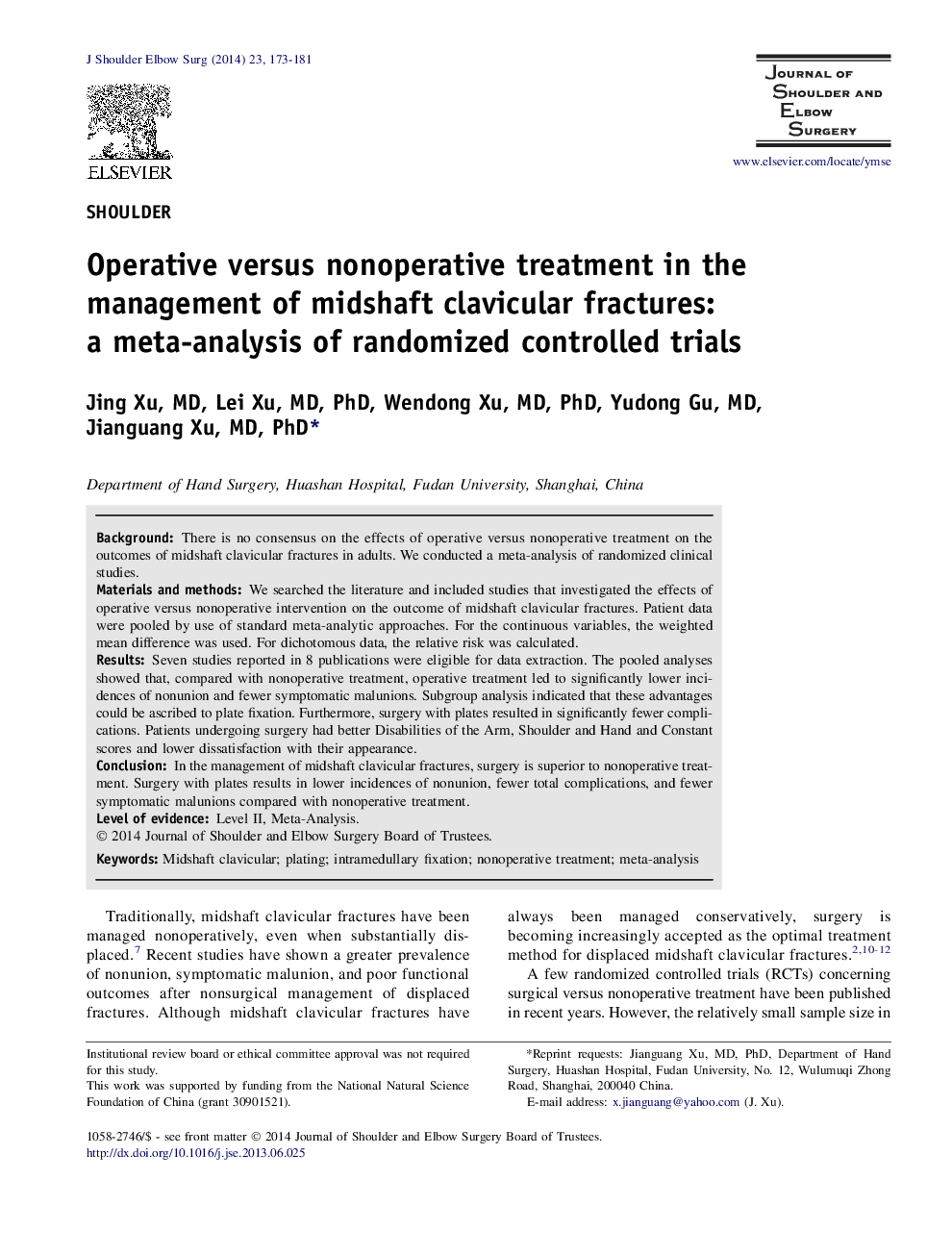| Article ID | Journal | Published Year | Pages | File Type |
|---|---|---|---|---|
| 4073888 | Journal of Shoulder and Elbow Surgery | 2014 | 9 Pages |
BackgroundThere is no consensus on the effects of operative versus nonoperative treatment on the outcomes of midshaft clavicular fractures in adults. We conducted a meta-analysis of randomized clinical studies.Materials and methodsWe searched the literature and included studies that investigated the effects of operative versus nonoperative intervention on the outcome of midshaft clavicular fractures. Patient data were pooled by use of standard meta-analytic approaches. For the continuous variables, the weighted mean difference was used. For dichotomous data, the relative risk was calculated.ResultsSeven studies reported in 8 publications were eligible for data extraction. The pooled analyses showed that, compared with nonoperative treatment, operative treatment led to significantly lower incidences of nonunion and fewer symptomatic malunions. Subgroup analysis indicated that these advantages could be ascribed to plate fixation. Furthermore, surgery with plates resulted in significantly fewer complications. Patients undergoing surgery had better Disabilities of the Arm, Shoulder and Hand and Constant scores and lower dissatisfaction with their appearance.ConclusionIn the management of midshaft clavicular fractures, surgery is superior to nonoperative treatment. Surgery with plates results in lower incidences of nonunion, fewer total complications, and fewer symptomatic malunions compared with nonoperative treatment.
